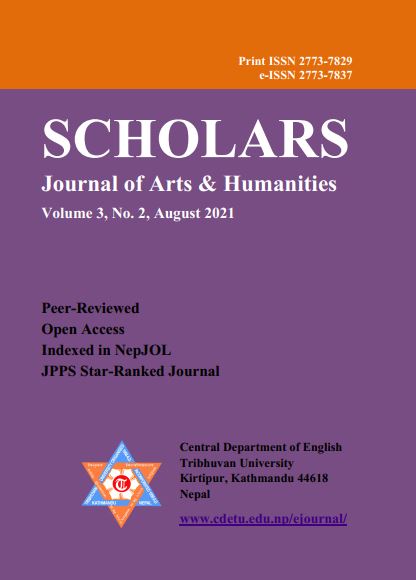Women as Subalterns in Jhumpa Lahiri’s “The Treatment of Bibi Haldar” and “A Real Durwan”
DOI:
https://doi.org/10.3126/sjah.v3i2.39437Keywords:
Histeric, verbal inconsistencies, resistance, subalternAbstract
This paper aims to investigate the hysteric tendencies, inconsistent speeches and silences of woman in Jhumpa Lahiri’s two short stories “The Treatment of Bibi Haldar” and “The Real Durwan.” The paper addresses this objective through the application of subaltern perspective: subaltern cannot speak. More specifically, single, poor and helpless women’s position and their inability to speak in need are analyzed in the light of subaltern studies. These two stories expose the issue of hysteric woman and an elderly street woman with different stories, respectively. The disadvantaged women’s inability to speak – parallels the subaltern’s inability to speak. This paper analyses hysterical tendencies, inconsistent behavior of Lahiri’s protagonists as the outburst, thus, the subtle ways of resistance. Thus, the paper draws the conclusion that Lahiri’s stories demonstrate economically and socially marginalized woman who lack the act of protest as they cannot speak, tending to develop the different verbal and physical inconsistencies.
Downloads
Downloads
Published
How to Cite
Issue
Section
License
Copyright (c) 2021 Central Department of English, Tribhuvan University and Authors

This work is licensed under a Creative Commons Attribution 4.0 International License.
© Central Department of English, Tribhuvan University and Authors




